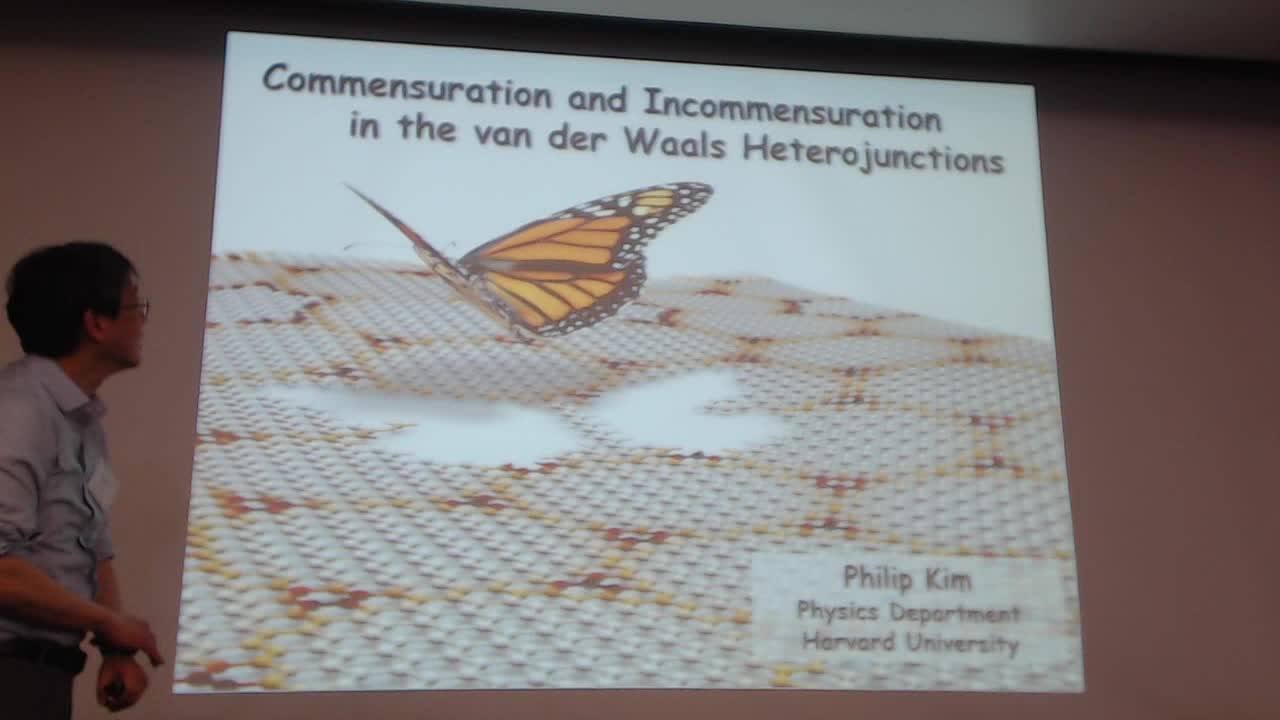Commensuration and Incommensuration in the van der Waals Heterojunctions
Presenter
May 16, 2017
Keywords:
- van der Waals materials, commensuration, moire lattice, transmission electron microscopy
Abstract
Heterogeneous interfaces between two dissimilar materials are an essential building block for modern semiconductor devices. The 2-dimensional (2D) van der Waals (vdW) materials and their heterostructures provide a new opportunity to realize atomically sharp interfaces in the ultimate quantum limit for the electronic and optoelectronic processes. By assembling atomic layers of vdW materials, such as hexa boronitride, transition metal chalcogenide and graphene, we can construct atomically thin novel quantum structures. We demonstrate the enhanced electronic and optoelectronic performances in the vdW heterostructures, suggesting that these a few atom thick interfaces may provide a fundamental platform to realize novel physical phenomena. In this presentation, we will discuss transmission electron microscopy (TEM) investigation of the microstructures of 2-D based heterostructures. Microstructural properties of the heterostructures caused by the interlayer interaction were studied by TEM-based analytical techniques such as electron diffraction, dark field imaging, and aberration corrected scanning TEM imaging. We show that the commensurate domain structures can be formed as a result of the interplay between van der Waals interaction energy and elastic energy of individual layers. Based on the experimental data, we identify microstructural origin that can cause the structural transition in the system.
